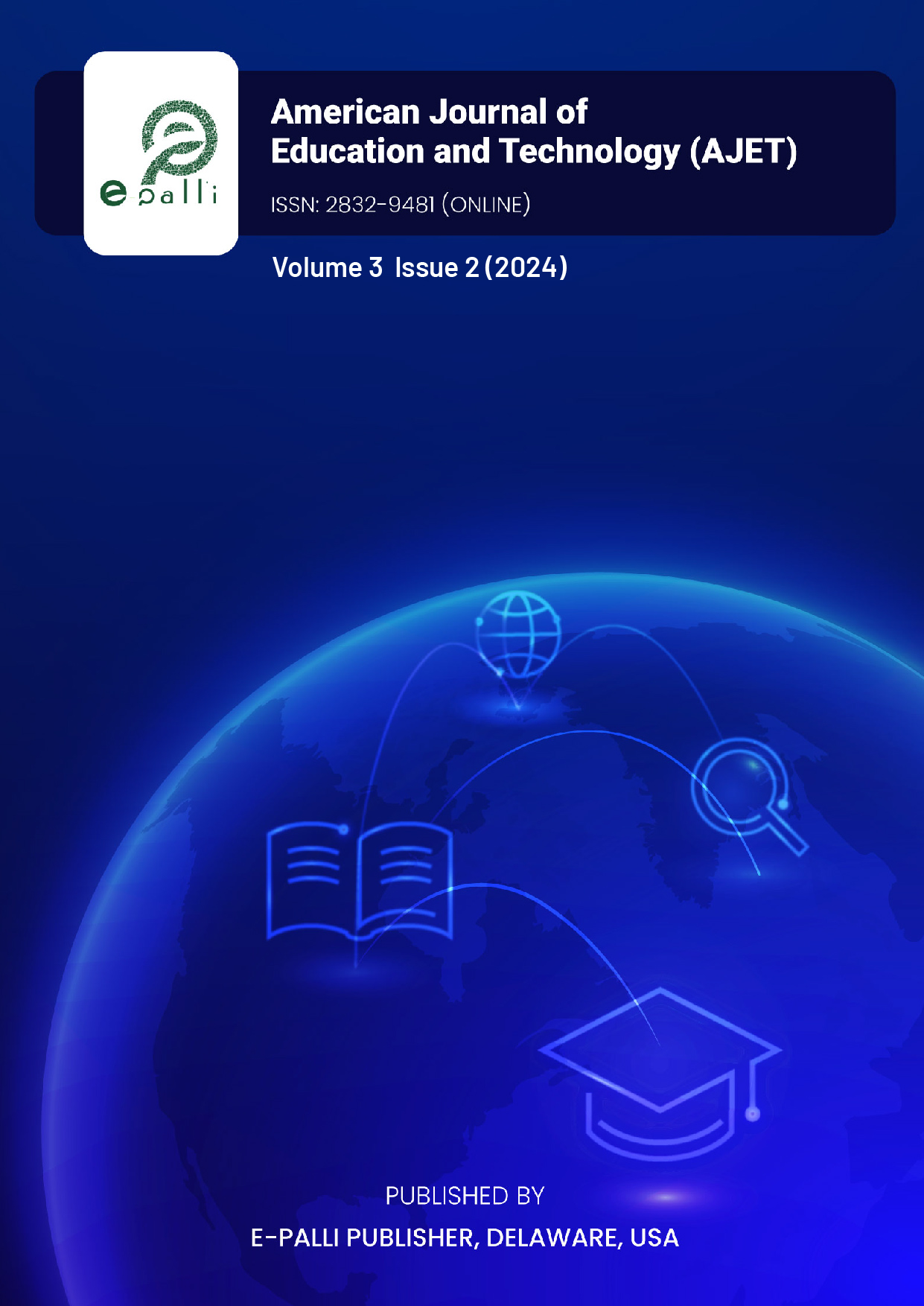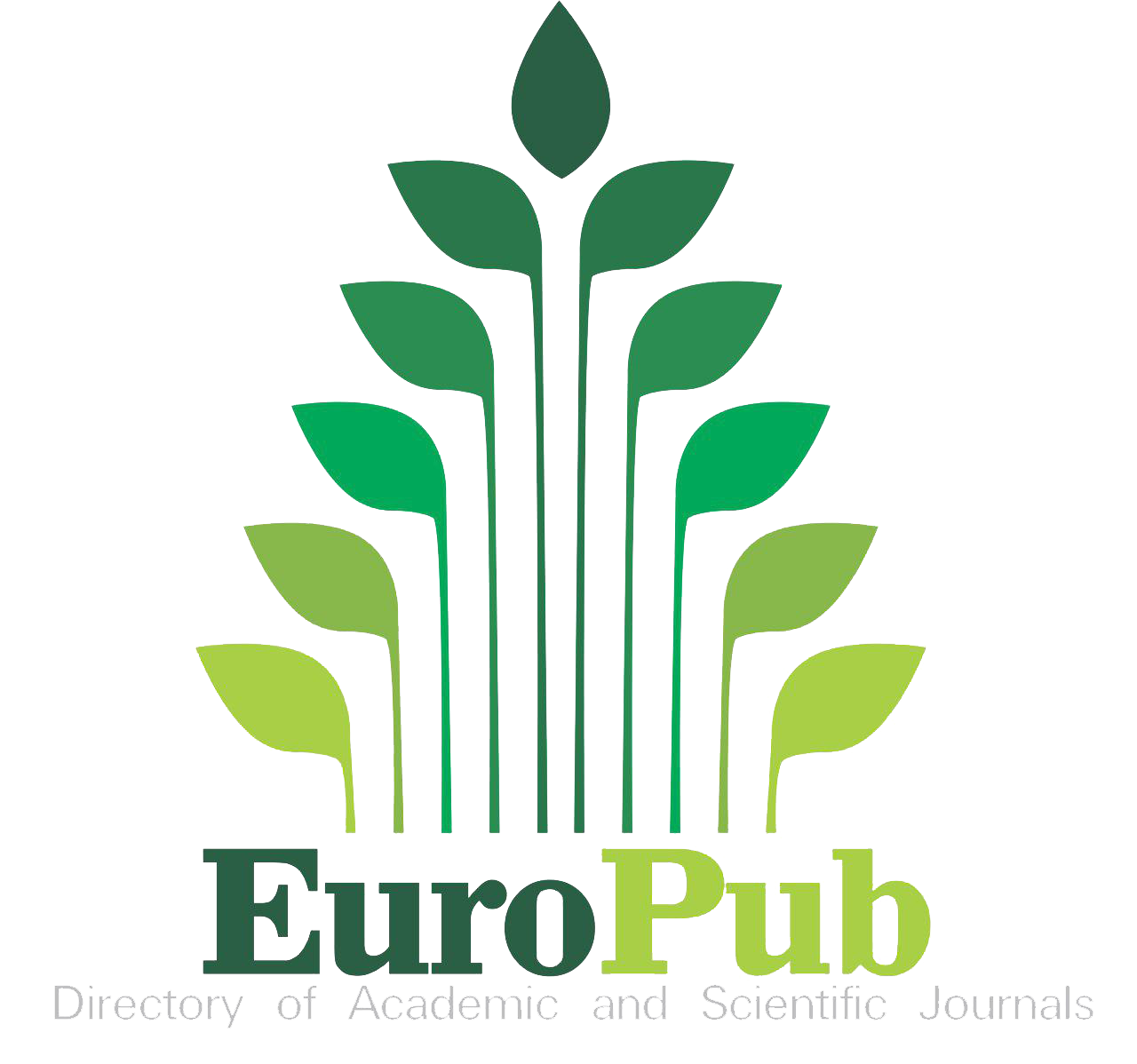Exploring Innovative Approaches and Interventions to Address Misconceptions and Promote Effective Visual Arts Education in Secondary Schools in Ghana
DOI:
https://doi.org/10.54536/ajet.v3i2.2524Keywords:
Visual Arts Education, Art Education, Secondary Education, Ghana, Innovative Practices, Creative Arts IntegrationAbstract
Visual arts education is important in developing students’ creativity, critical thinking, and cultural awareness. However, in Ghana, visual arts subjects at the secondary school level often need help with challenges such as lack of resources, large class sizes, and misconceptions about the value of art education. This study aimed to explore innovative approaches and interventions that could address misconceptions and promote effective visual arts education in Ghana’s secondary schools. A qualitative document analysis and thematic analysis were conducted. Relevant policy documents, national curriculum frameworks, and previous research studies related to visual arts education in Ghana were analyzed to identify existing challenges, opportunities, and recommendations. Key emerging themes included misconceptions about visual arts subjects, lack of resources, training for art teachers and large class sizes that do not augur well for hands-on learning. The analysis also identified recommendations such as integrating visual arts across the curriculum, promoting art exhibitions, and leveraging community resources and partnerships to support visual arts programmes. This study provides insights into existing challenges in visual arts education in Ghana’s secondary schools and highlights innovative approaches that could help address misconceptions and strengthen visual arts programmes. Integrating visual arts across subject areas, promoting art exhibitions, improving teacher training, and leveraging community partnerships may help promote effective visual arts education.
Downloads
References
Akyeampong, K., Pryor, J., Ampiah, J. G., Adu Yeboah, F. (2013). Meeting universal basic education goals in Africa: The effectiveness and shortcomings of six country case studies: An exploration of the evidence and issues. Comparative Education, 49(2), 127-152. https://doi.org/10.1080/03050068.2013.796932
Bamford, A. (2006). The wow factor: Global research compendium on the impact of arts in education. Waxmann Verlag.
Banks, C. M. (2018). A Qualitative Study on Teachers’ Perceptions of Co-Teaching in Inclusion Classrooms. Seton Hall University Dissertations and Theses (ETDs).
Bloomfield, A., & Childs, J. (2000). Teaching Integrated Arts in the Primary School: Dance, Drama, Music, and the Visual Arts (1st ed.). David Fulton Publishers. https://doi.org/10.4324/9781315068800
Bowen, G. A. (2009). Document analysis as a qualitative research method. Qualitative Research Journal, 9(2), 27-40. https://doi.org/10.3316/QRJ0902027
Braun, V., & Clarke, V. (2006). Using thematic analysis in psychology. Qualitative Research in Psychology, 3(2), 77-101. https://doi.org/10.1191/1478088706qp063oa
British Council. (2014). The arts in schools: Impact and implementation. https://www.britishcouncil.org/sites/default/files/arts-in-schools-report-v2.pdf
Burnaford, G., Brown, S., Doherty, J., & McLaughlin, H. J. (2007). Arts integration frameworks, research & practice. Arts Education Partnership.
Butterfield, S. C. (2018). Teacher characteristics and instructional practices that influence music student learning: A case study of exemplary high school music teachers (Publication No. 10743505). ProQuest Dissertations Publishing.
Catterall, J. S., & Dumais, S. A. (2012). The arts and achievement in at-risk youth: Findings from four longitudinal studies. Research Report #55. National Endowment for the Arts.
Deasy, R. J. (Ed.). (2002). Critical links: Learning in the arts and student academic and social development. Arts Education Partnership.
Eisner, E. W. (2002). The arts and the creation of mind. Yale University Press.
Garrett, J. A. (2010). Arts integration professional development: Teacher perspective and transfer to instructional practice. Walden University.
Ghana Education Service. (2019). Visual arts syllabus for senior high schools. Curriculum Research and Development Division.
Guion, L. A., Diehl, D. C., & McDonald, D. (2011). Triangulation: Establishing the validity of qualitative studies. University of Florida IFAS Extension. Retrieved from https://scholarship.shu.edu/dissertations/2606
Manner, B. M. (2002). Arts throughout the curriculum: How classroom teachers’ use of arts activities can affect student learning and other outcomes. American Educational Research Association.
Ministry of Education. (2010). Education strategic plan: 2010 to 2020 (Vol 1-3). Republic of Ghana.
Nortey, S., Bodjawah, E. K., & Poku, K. A. (2021). The intellectual legacy of Gold Coast Hand and Eye curriculum and art education in Ghana. International Journal of Education & the Arts, 22(6). Retrieved from http://doi.org/10.26209/ijea22n6
Rabkin, N., & Hedberg, E. C. (2011). Arts education in America: What the declines mean for arts participation. National Endowment for the Arts.
Rabkin, N., & Redmond, R. (2006). The arts make a difference. Educational Leadership, 63(5), 60-64.
Ruppert, S. (2006). Critical evidence: How the arts benefit student achievement. National Assembly of State Arts Agencies.
UNESCO. (2006). Road map for arts education. World Conference on Arts Education: Building Creative Capacities for the 21st Century.
Downloads
Published
How to Cite
Issue
Section
License
Copyright (c) 2024 Cyril S. Kpodo, Francis Ankyiah, Glover Reuben Agbelengor, Samuel Dah

This work is licensed under a Creative Commons Attribution 4.0 International License.







